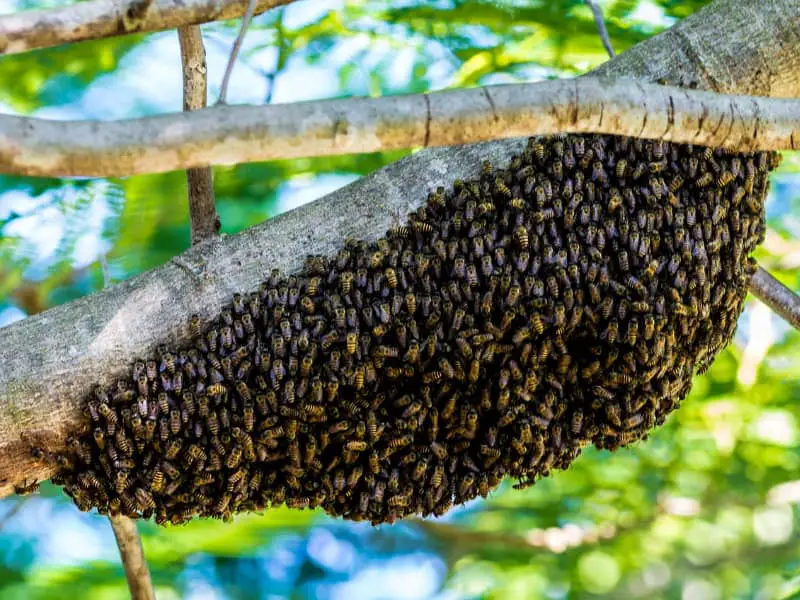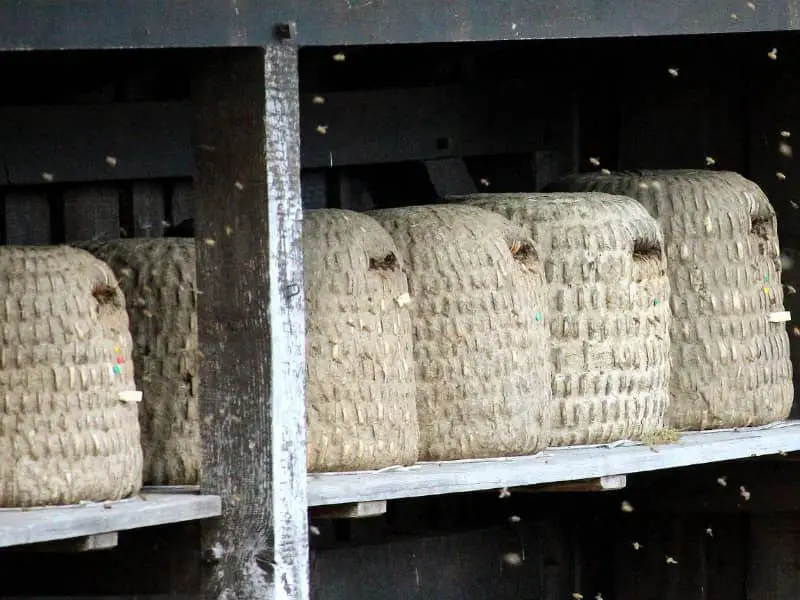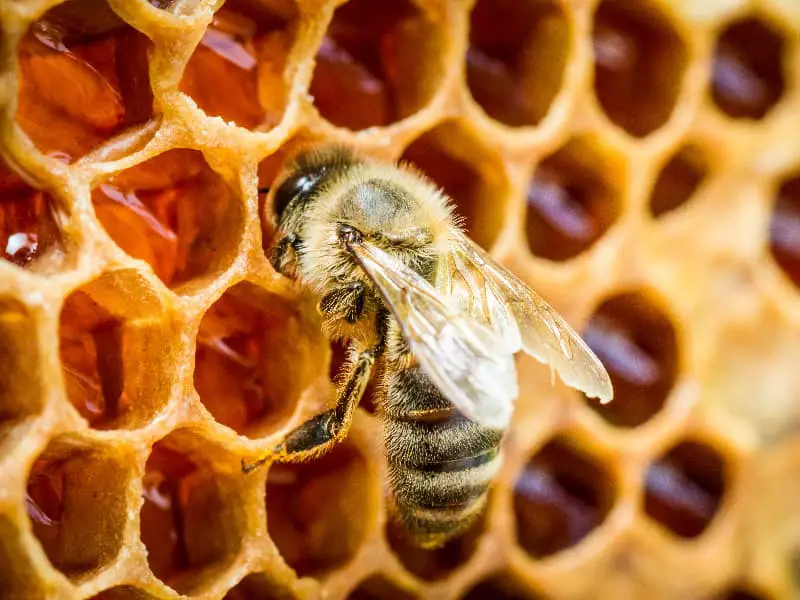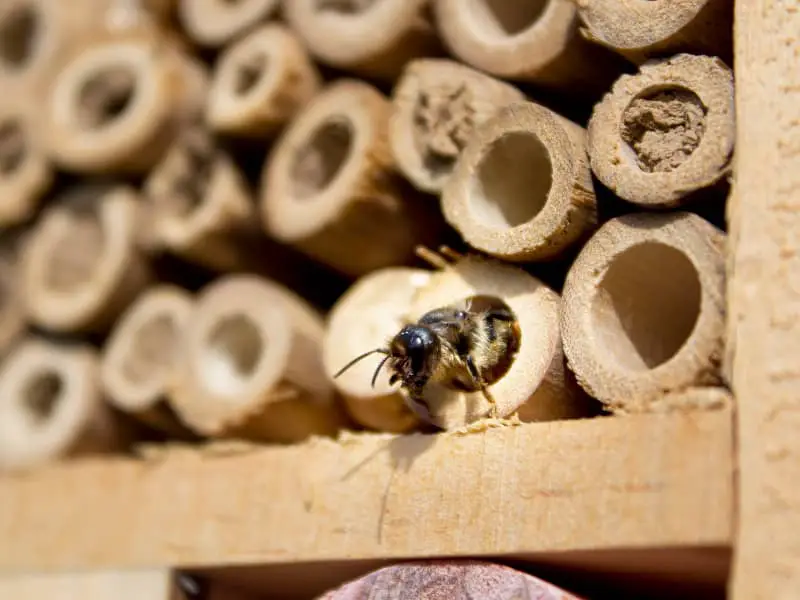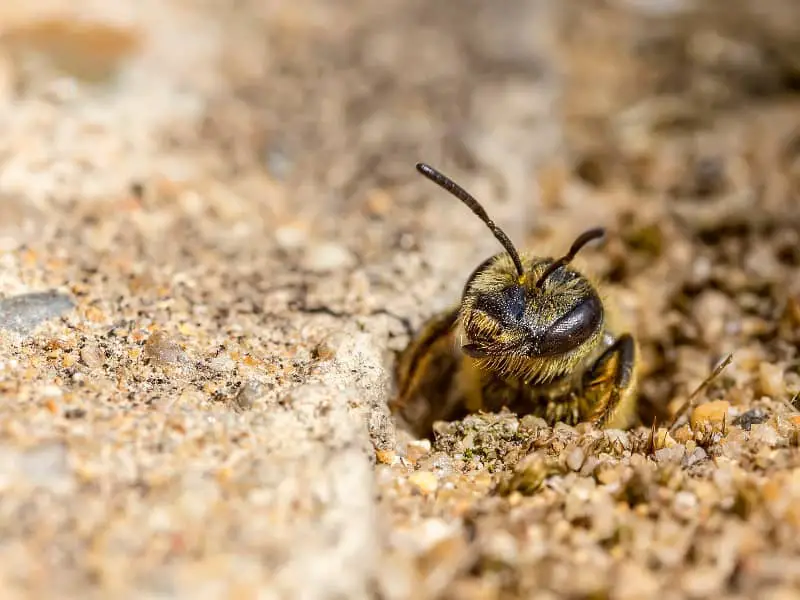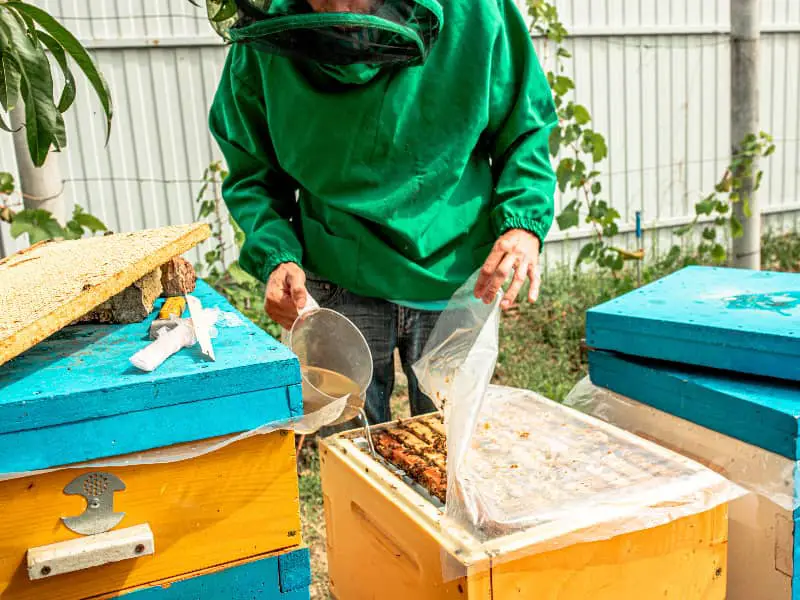
Bees stimulus feeding
Stimulus feeding of bees is a multi-faceted and often controversial topic of importance to beekeepers and nature enthusiasts alike. In this blog post, we highlight the various aspects of this exciting complex of topics.
- Bees stimulus feeding
- Why is the stimulus feeding of bees important?
- Basics of bee biology
- What is stimulus feeding?
- Advantages of stimulus feeding
- Disadvantages and risks of stimulus feeding
- Best seasons for stimulus feeding
- Type of feed during stimulus feeding
- Stimulus feeding - feeding techniques
- Stimulus feeding - dosage and quantity
- Stimulus feeding - influence on honey quality
- Stimulus feeding - Ethical considerations
- Conclusion: bee stimulus feeding
Why is the stimulus feeding of bees important?
Stimulus feeding is more than just a method to increase honey production. It is a practice that helps the colony use its resources efficiently and prepare for brood activity in a special way. When done properly, stimulus feeding can help the colony achieve better health and higher performance. Therefore, anyone interested in bees and beekeeping should know the basics and intricacies of stimulus feeding.
Aim of the blogpost
The aim of this paper is to provide a deep insight into the practices, benefits and risks of stimulus feeding in bees. We will look at different feeding methods, the best times to stimulus feed, how to choose the appropriate feed and many other aspects. By the end of the article, you will have a clearer idea of how to effectively integrate stimulus feeding into your beekeeping.
Structural overview
Before we dive deep into the subject matter, here's a quick overview of the structure of this blog post. We'll start with the biological basics of bees so you have a better understanding of the need for stimulus feeding. We'll then highlight the different feeding methods, discuss pros and cons, and provide practical tips for use. We will also not ignore the environmental and ethical aspects of stimulus feeding.
Basics of bee biology
Before we dive into the details of stimulus feeding, it is important to understand some basics of bee biology. This will help you better understand the effects of stimulus feeding.
Life cycle of a bee
The life cycle of a bee begins as an egg that is laid in a honeycomb. The egg hatches into a larva, which develops through various stages of development until it becomes an adult bee. During this cycle, feeding is critical. Larvae are fed a mixture of pollen and honey to fully develop. The life cycle varies depending on the role in the hive: workers typically live for a few weeks, while queens can live for several years. Understanding this cycle is critical to understanding how and when stimulus feeding is most effective.
Workers, queens and drones
A bee colony consists of different castes: workers, queens and drones. Workers are the female bees that do most of the work in the hive, including caring for the brood and foraging for food. Queens are responsible for laying eggs, and drones are male bees whose main job is to mate with the queen. Each of these castes has specific food needs, and stimulus feeding must be adjusted accordingly to benefit the entire colony.
Social structure in the hive
The bees in a colony follow a strict social hierarchy. The queen is the center of the hive, and her pheromones control the behavior of the other bees. Workers take care of the brood, collect nectar and pollen, and defend the hive. Drones have few tasks and are often expelled from the hive after mating. This social structure has direct implications for stimulus feeding, as the needs of each caste must be considered.
What is stimulus feeding?
To take full advantage of the art of beekeeping, it is essential to understand stimulus feeding. It is an important method for increasing the productivity of a bee colony, but it must be done properly.
Definition and goal
Stimulus feeding is a feeding method aimed at stimulating the bees to increase brood care and honey production. It involves providing the colony with additional food, often in the form of a sugar solution, to activate the bees' natural instincts for food collection and storage. The overall goal is to increase the general vitality of the colony and improve honey yields.
Differentiation from other feeding methods
While other feeding methods, such as emergency feeding, focus on keeping a colony alive, stimulus feeding is about more. It aims to actively stimulate the bees to collect more nectar and thus produce more honey. The method is usually applied at certain times of the year and requires careful planning and monitoring.
When and why is it used?
Stimulus feeding is mainly used in spring and early summer, when bees are active and flowers are in full bloom. The additional food intake stimulates the colony to produce more brood, which ultimately leads to a higher number of worker bees. These can then collect more nectar and increase the colony's honey supply.
Advantages of stimulus feeding
Stimulus feeding brings many benefits to the bee colony, provided it is done properly and at the right time. In this section we will go into the positive effects of the method.
Increase breeding activity
One of the most noticeable benefits of stimulus feeding is the increase in brood activity in the hive. By feeding additional food, the queen is stimulated to lay more eggs. This results in more larvae hatching and an increase in the number of workers in the hive. The increased number of bees enables the colony to collect nectar more efficiently and to better prepare for upcoming tasks, such as honey production.
Improved honey production
With an increased number of workers in the hive, the efficiency of honey production also increases. More bees mean more foragers bringing in nectar and more workers converting it into honey. Furthermore, strong brood activity increases the overall capacity of the hive to produce and store more honey. Thus, a significantly higher honey yield can often be achieved through targeted stimulus feeding.
Strengthening the bee colony
Not only the honey production benefits from the stimulus feeding. The general vitality of the bee colony is also strengthened. A strong, healthy colony is more resistant to diseases and better able to defend itself against pests. The additional food intake during stimulus feeding improves the health of the entire hive, which has a positive effect on the longevity and survivability of the colony.
Disadvantages and risks of stimulus feeding
As beneficial as stimulus feeding can be, it also comes with disadvantages and risks that need to be carefully considered. Here we look at some of the potential pitfalls and how to avoid them.
Overfeeding
Stimulus feeding, if not done properly, can lead to overfeeding of the colony. An excessive supply of additional food can cause the hive to become overcrowded and lack space for brood. In extreme cases, this can even threaten the survival of the bee colony. Therefore, it is important to carefully calculate the feeding amounts and always keep an eye on the colony's reaction to the stimulus feeding.
Susceptibility to diseases
Another risk of stimulus feeding is increased susceptibility to disease. A colony stimulated by stimulus feeding may be more productive, but it is also more susceptible to diseases such as varroasis or nosemosis. It is therefore crucial to ensure that the colony is healthy before starting stimulus feeding and to carry out regular health checks during stimulus feeding.
Change of natural behavior
Stimulus feeding can also influence the natural behavior of bees. For example, continuous feeding could make the bee colony less motivated to collect nectar itself. In the long term, this could affect the natural instincts of the bees and thus also the quality of the honey produced. Therefore, it is important to see stimulus feeding as a temporary measure and not as a permanent solution.
Best seasons for stimulus feeding
Choosing the right time for stimulus feeding is a crucial factor for the success of this method. Depending on the time of year, results may vary. In this section we explain which seasons are particularly suitable for stimulus feeding and why.
Spring
Spring is one of the best times for stimulus feeding, because at this stage of the year many plants are in bloom and bees are actively collecting nectar. Stimulus feeding in spring can increase brood activity, resulting in a larger number of worker bees. These can then collect nectar more efficiently and increase the colony's honey supply.
Summer
Summer is also a suitable time for stimulus feeding, but with some limitations. High temperatures and limited availability of water sources can stress the bees. Therefore, one should be especially attentive during the summer months and closely monitor the feeding amounts as well as the vitality of the colony.
Fall
Autumn is usually not the ideal time for stimulus feeding, as the bees reduce their activity and prepare for winter. During this time, it is better to switch to emergency feeding to ensure the survival of the colony. Nevertheless, in some cases it may be useful to carry out moderate stimulus feeding even in autumn, especially if the colony is healthy and the environment is still rich in nectar sources.
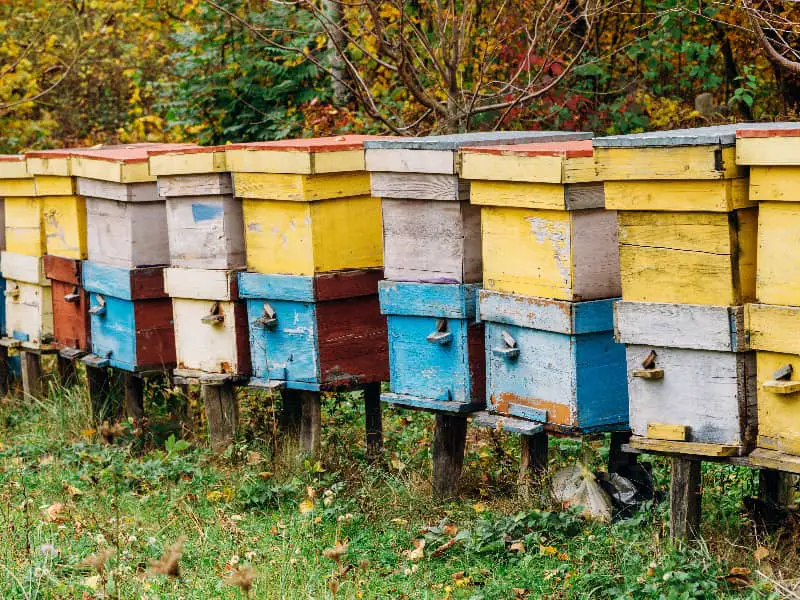
Type of feed during stimulus feeding
The choice of forage plays an important role in stimulus feeding. Different types of feed have different effects on the bee colony and can be appropriate in different situations. Here we discuss which types of feed are suitable for stimulus feeding and what special features need to be considered.
Sugar solutions
Sugar solutions are the most commonly used type of feed for stimulus feeding. They are readily available, inexpensive and easy to prepare. In addition, they can be well absorbed by the bees and quickly converted into energy. There are various formulations, but a common mixture is one part sugar and two parts water. It is important to use pure sugar, as additives could harm the bees.
Honey
Although honey is a natural product and in theory seems ideal for bees, its use as food in stimulus feeding carries risks. Honey can contain pathogens that can harm the bee colony. Especially if the honey comes from another bee colony, the risk of disease transmission is high. Therefore, honey should only be used in exceptional cases and after careful consideration.
Alternatives
There are also other feed alternatives such as special syrups or ready-made products developed for stimulus feeding. These products are usually well suited to the needs of the bees and often contain additional nutrients that can strengthen the colony. However, they are usually more expensive than homemade sugar solutions and are not always readily available.
Stimulus feeding - feeding techniques
The way the food is presented to the colony can have a significant impact on the success of stimulus feeding. Different feeding techniques are suitable for different scenarios and have their own advantages and disadvantages. In this section, we look at the most common methods of feed presentation.
Lining frame
The feed frame is one of the most traditional and common methods of feeding bee colonies. It is a special frame that is placed on the top of the hive and contains the feed. The feed frame allows for easy and efficient feeding and minimizes the risk of feed loss. It is also particularly suitable for feeding larger quantities.
Food bowl
The feeding tray is another option for feeding, which is especially suitable for smaller colonies or for short feeding periods. In this case, a bowl with food is placed directly in the hive or near it. This method is simple and inexpensive, but carries the risk of contaminating the feed or attracting other insects.
Drip feeding
Drip feeding is a more precise method of feeding, where the feed is introduced drop by drop directly into the hive. This method is particularly suitable for targeted feeding of specific parts of the colony or for the use of special feed mixtures. However, drip feeding requires special equipment and more effort compared to other methods.
Stimulus feeding - dosage and quantity
When stimulus feeding, it is critical to provide the right amount of feed. Over- or under-feeding can lead to a variety of problems, from altering the bees' natural behavior to posing health risks. In this section we will discuss how to find the right feed dosage for your colony.
How much food is necessary?
The necessary amount of feed can vary depending on the goal of the stimulus feeding, the current health status of the bee colony and the environmental conditions. In general, an amount between 0.5 and 2 liters per week can serve as a guideline. However, it is important to observe the reaction of the bee colony to the feeding and adjust the amount accordingly.
Adaptation to the size of the people
The size of the bee colony is a decisive factor in determining the amount of feed. A small colony naturally requires less feed than a large one. Feed requirements can be better estimated by regular inspections of the hive and by weighing the available honey stores.
Feeding frequency
The frequency of feeding depends on several factors, including the time of year, the health of the colony, and the intended goal of the stimulus feeding. While more frequent feeding may be appropriate during periods of high activity, feeding may need to be less frequent during quieter periods. Good monitoring of colony condition will help determine the optimal time to feed.
Stimulus feeding - influence on honey quality
Stimulus feeding not only affects the bee colony itself, but can also influence the quality of the honey produced. This concerns aspects such as taste, consistency and nutritional content of the honey. In this section, we address the specific influences of stimulus feeding on these quality criteria.
Taste
The flavor of honey can be influenced by the type of feed used in stimulus feeding. Sugar solutions, for example, can result in a more neutral, less complex flavor profile, while special feeds such as certain syrups can refine the flavor. It is important to keep this in mind, especially if the honey is intended for sale.
Consistency
The consistency of the honey can also be changed by stimulus feeding. By adding additional sugars, the honey can become thicker, among other things. This can be both positive and negative, depending on the preferences of the beekeeper or the end user. Therefore, when choosing the feed, its influence on the consistency of the honey should also be taken into account.
Nutrient content
Stimulus feeding can also affect the nutrient content of honey. While natural nectar sources contain a wide range of nutrients and enzymes, artificial feed sources such as sugar solutions are usually lower in nutrients. However, special feeds may contain additional nutrients that enrich the honey.
Stimulus feeding - Ethical considerations
In addition to the practical aspects of stimulus feeding, there are also ethical considerations that should not be ignored. Especially when it comes to animal welfare and ecological responsibility, careful considerations are necessary. In this section, we address the ethical issues surrounding the stimulus feeding of bees.
Animal Welfare
The welfare of the bees should always be the primary consideration when it comes to stimulus feeding. Although the method can provide benefits such as increased honey production and stronger colony development, it is critical to minimize the potential risks to bee health and welfare. This includes avoiding overfeeding, selecting appropriate forage species, and continuously monitoring the colony.
Ecological responsibility
Stimulus feeding, if done improperly, can have negative impacts on the environment. This concerns, for example, the selection of forage species that could potentially support invasive or harmful plant species. The use of chemicals or artificial additives should also be carefully considered to minimize negative ecological effects.
Conclusion: bee stimulus feeding
Stimulus feeding of bees is a complex topic that has both benefits and risks. In this blogpost, we have highlighted many aspects, from the scientific basis to ethical issues. Finally, we summarize the main findings and provide some practical tips.
Key findings
Stimulus feeding can promote brood activity, honey production and general colony health under certain conditions. However, careful planning and implementation is required to minimize risks such as overfeeding, susceptibility to disease, and changes in the bees' natural behavior. Likewise, stimulus feeding can affect the quality of honey produced and the environment.
Tips for practice
- Watch your colony carefully to find the best time and most appropriate amount for stimulus feeding.
- Choose feed and feeding techniques carefully to consider both animal welfare and honey quality.
- Consider how your practices might affect the environment and act responsibly accordingly.
Final thoughts
Stimulus feeding can be a valuable tool for beekeepers, provided it is used responsibly and informed. By considering the many factors we have discussed in this blog post, you can use the method effectively and ethically.
Author

-
Garden animal - A life with nature
Welcome to my animal blog! My name is Dirk and I am happy to take you on my journey through the fascinating world of animals and gardening.
Born 54 years ago, I have had an insatiable curiosity for the animal world around me since childhood. Although I have moved professionally in other industries, my true passion has always been animals and nature. It is remarkable how a small garden has become such an important part of my life.
Many of my fondest memories are associated with the animals that share our home. Whether it's the curious squirrels that scurry across the trees in the morning, the colorful variety of birds that visit our feeders, or the busy bees and butterflies that pollinate our flowers, every moment with them is invaluable to me.
This blog is my contribution to share my experiences, discoveries and insights with like-minded people. Here I will share stories of unforgettable encounters with animals, give tips on gardening and creating wildlife-friendly habitats, and take you on my journeys through nature.
Thank you so much for being here!
Cordial,
Dirk aka garden animal
Last posts
- 27. February 2024PetsVeganes Hundefutter – Grün und Gesund?
- 18. January 2024ChickensOregano für Hühner
- November 27, 2023HamsterDiurnal hamsters
- November 24, 2023HamsterHamster hammock

